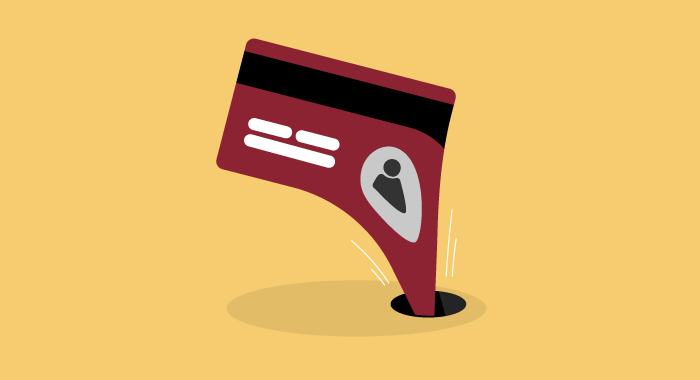We’re now entering the biggest shopping season of the year, and unfortunately, it’s also a time when people are most vulnerable to identity theft. All that extra spending – especially when it comes to spending online – means extra opportunities for identity thieves to get ahold of your personal details and commit fraud, which could leave you missing hundreds or even thousands of dollars from your bank account.
What should you do if your identity is stolen and what’s the best way to protect yourself from fraud? Read on for a rundown of how to stop identity theft and safeguard your wallet this season.
Know the Warning Signs
Often, fraudsters get away with identity theft because their target doesn’t realize information has been stolen. Learn to recognize the warning signs of identity theft – bank account withdrawals that seem unfamiliar, bills or other mail going missing, unfamiliar credit card charges, or any kind of notification from a company you do business with regarding a data breach. In more serious cases, you might even hear from the IRS about more than one tax return being filed in your name, or be contacted by a debt collector regarding debts that you don’t have any knowledge of.
Read Your Credit Card Statement
A key warning sign that you’ve been the victim of identity theft is unexplained charges on your credit card. While it can be tempting to simply glance at your statement before tossing it into the recycling pile – now’s the time to break the habit! Get into the practice of thoroughly reviewing your credit card statement every month and keep an eye out for any charges you don’t recognize. Fraudsters sometimes take small amounts of money in the hopes you won’t notice, so be vigilant about reviewing even the small transactions. If something looks strange, call your credit card company immediately.
Make an Identity Theft Report
If you’ve been a victim of identity theft, you can help stop the criminal and protect your own finances by reporting the fraud online. Visit www.identitytheft.gov to report the identity theft and get a recovery plan, including pre-filled forms and letters to help ease the process. You should also consider placing a fraud alert by contacting a credit bureau. A fraud alert can be placed even before any money has been stolen, to make it more difficult for the thief to open accounts in your name, run up charges and accrue debt. The credit bureau will also offer you a free credit report so you can check that everything is as it should be.
Be Vigilant When Shopping Online
Shopping online has become second nature for most of us, especially during the busy holiday shopping season, so it’s easy to forget about taking basic precautions. This is especially true when social media and other non-traditional shopping platforms are involved, as small retailers may sometimes request payment details via a non-secure method, such as email or a messaging platform. Always be vigilant when handing over any payment information online and aim to only share details via a secure payment page – check for security logos and read the website’s security information if you’re unsure.
Take Everyday Tech Precautions
Keeping your own technology updated is an important step to deter fraudsters. Make sure you’re using trusted anti-virus software from a brand like Norton or Kaspersky, and install new versions as required to so that your protection is always up-to-date. These kinds of everyday precautions help to ensure that when you do spend online or share personal information in any way, it’s a safer process all around. Other technology safeguards include only downloading from sites you trust, always keeping the firewalls on, and never installing unidentified software.
Don’t Forget About Paper Documents
While it’s true that the majority of identity theft today is related to online purchases, it’s also important to be mindful about paper documents that contain identifying information. It’s a smart idea to shred everything, including junk mail, ‘convenience’ checks from credit card companies, and anything with your signature, account passwords or social security information. Once you no longer need the document – into the shredder it goes! If you think you might need this particular document at some point in the future, put it in a dedicated and secure place in your home.
Ensure You Use Robust Passwords
Choosing a strong password is a simple way to help protect your identity and financial information. Don’t use the same password for multiple online accounts, and be sure to change your passwords at regular intervals. Beyond integrating numbers and symbols into your password, another way to protect your identity online is to create a “pass phrase – which is an entire sentence, rather than just a single word. Replace individual letters with numbers or symbols, and you’ll have a strong but also memorable password to keep your information more secure.





